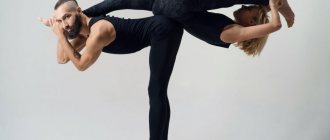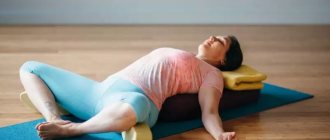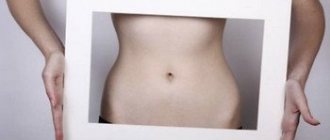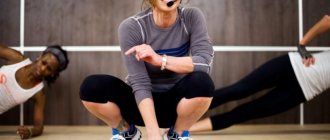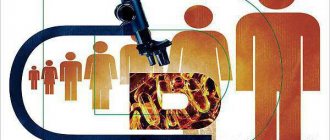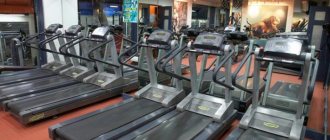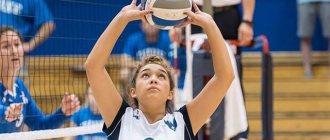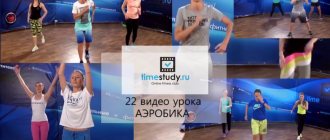“Asana” is literally translated from Sanskrit as “sitting”, “place to sit”. An asana can be called the mat on which you sit while doing yoga, and the pose itself in which you are located. Historically, sitting asanas were the first to emerge.
In the oldest text describing yoga - the Yoga Sutras of Patanjali, dating from the 4th century. BC. until the 4th century n. e. – the definition of asana is given for the first time:
Asana is a stationary and comfortable [posture] (2-46)1.
When effort ceases [or] concentration on the infinite [asana is achieved] (2-47)1.
Thus, according to Patanjali’s definition, the performance of asanas has several conditions:
- Immobility.
- Convenience.
- Cessation of effort (relaxation).
- Focusing on the infinite (dispersal of attention).
Patanjali does not mention specific asanas, limiting himself only to the definition, while he describes more than 20 types of meditation (sanyam). Probably, at that time the doctrine of asanas had not yet been developed; asana served only as a condition for meditation and was not specified as a technique in itself.
The most authoritative commentator on the Yoga Sutras, Vyasa, who lived in the 4th-5th centuries. n. e., already mentions 11 asanas: padmasana, virasana, bhadrasana, swastikasana, dandasana, soparsaya, paryanka, krauncha-nisadana, hasta-nisadana, ustra-nisadana and sama-samsthana. Ten sitting poses and one lying pose, now known as savasana. Almost all of these poses are still used today, although some are under different names.
Subsequently, the teaching of asanas developed within the framework of hatha yoga. This is a direction that arose in the Shaivite tantric tradition of the Naths in the 10th-11th centuries. n. e. The most famous ancient texts on hatha yoga are the Hatha Yoga Pradipika, Gheranda Samhita and Shiva Samhita.
In addition to meditative asanas, these texts also mention poses aimed at strengthening and healing the body:
Asanas ... will make the yogi steadfast, free from ailments and give lightness to the body (1.19)2.
These texts are the first to mention the therapeutic effects of asanas. For example:
Matsyasana... whets the appetite, increases gastric fire and eliminates terrible ailments of the body (1.28)2.
Mayurasana eliminates abdominal ailments, dropsy, diseases of the spleen, destroys all ailments caused by the action of bile, mucus and gases (1.32)2.
The purpose of asanas is health and self-regulation, not physical fitness. Asanas have a greater impact on internal organs and joints than on muscles. Some act like a massage, squeezing and stretching different parts of the body, others affect blood circulation, others activate innervation, and others activate the hormonal system...
Only a small number of poses are aimed at stretching or strengthening muscles, and these poses are relatively recent. This must be remembered when practicing asanas, since, trying to load the muscular system, you can overload the joints, spine and internal organs. Asanas are not a sport, and their purpose is completely different.
There are different classifications of asanas, I use the following:
A complex of asanas for all muscle groups
- Virasana (Hero Pose).
This asana is great for the ankle joints. Together with standing poses, it helps eliminate the tendency to chronic subluxations and their consequences. Staying in this position for half an hour relieves histamine headaches and migraines. Due to insufficient flexibility in the ankle joints, Virasana is difficult for many students. In this case, mastering the pose should begin with Vajrasana (Thunderbolt pose). When your feet get used to the new position, spread your knees hip-width apart, place a brick between your feet and lower your pelvis onto the support. If you find it difficult to sit in Vajrasana, perform Ardha Virasana (half version of Hero Pose): place your left leg in Virasana and extend your right leg forward (do not forget to perform the asana in the other direction). Keep your back straight, chest open. Listen to your feelings and try to relax. Stay in the asana until you feel discomfort. If you suffer from varicose veins, practice for no more than a minute. - Jathara Parivartanasana (Abdominal Twist Pose).
Lie on your back and extend your arms to the sides. Raise your legs perpendicular to the floor. As you exhale, lower your straight legs to the right and grab your feet with your right hand. If you lack flexibility, put a belt around your feet. If you suffer from lumbosacral radiculitis, lower your bent legs to the right, straightening them on the floor, and exit the pose with your legs bent as well. As you enter the asana, relax your neck, throat and stomach. The face is turned to the ceiling, the eyes are closed. At first, the left shoulder will come off the floor - do not force it down, it will gradually lower itself. When this happens, begin to align the position of the feet: usually the upper one “lags behind” the lower one and the symmetry of the pelvis is broken. Rotate your pelvis so that your feet are at the same level. Work in the pose without straining. Perform the asana for one minute and then repeat it on the other side. - Utthita Trikonasana (Triangle Pose).
This and the following poses are useful for scoliosis, arthritis, slight misalignment of the vertebrae, sciatica and flat feet. Stand with your back to the wall at a distance of 10–15 cm. Spread your legs so wide that, leaning to the right, you can easily grab the center of your right shin with your right hand or lower your palm to the floor at the level of the center of the shin. In this case, the right hand should be perpendicular to the floor. Turn your right foot outward and turn your left foot inward, with your left heel touching the wall. Press your soles into the floor and pull up your kneecaps. Press your shoulder blades against the wall and, as you exhale, lower your body to the right. Bend until you feel resistance in your sides or right leg. As soon as it occurs, place your right hand on your right leg or the floor and transfer some of your weight to it. Don't bend your knees and relax your torso. Extend your left arm up. Turn your head to the left, look at your left thumb, or close your eyes. The neck is relaxed, breathing is free. Having mastered the asana, move away from the wall and perform the pose without support. Stay in the asana for a minute. As you inhale, lift your body and repeat on the other side. - Parivritta Trikonasana (Twisted Triangle Pose).
Stand facing the wall and spread your legs slightly smaller than in Trikonasana. Turn your right foot outward and turn your left foot inward. As you exhale, bend to the right, turning your body so that your shoulder blades touch the wall. Place your left palm on the floor near the outside of your right foot. The tips of your toes and hands are at the same level. If you have trouble lowering your hand to the floor, use a brick. If possible, press your shoulder blades and shoulders against the wall, and extend your right arm up. Breathing is free. The stomach is relaxed. The face is turned towards the ceiling. Look at your right thumb or close your eyes. Stay in the pose for a minute and then perform it on the other side. - Paschimottanasana (Posterior Body Stretch)
. This pose stimulates the intestines, stomach and abdominal organs. Contraindications: excess weight, pregnancy, inguinal and intervertebral hernia. Sit on the floor and stretch your legs forward, feet together. Lean forward, extend your arms on either side of your feet, or grab your feet with your palms. If possible, lower your forehead onto your shins. If you lack flexibility, place a strap over your feet and grab the ends. Point your toes slightly toward you and your heels away from you, so that your soles are perpendicular to the floor and the backs of your legs are extended. Direct the inner edges of the feet away from you, and move the outer edges towards the pelvis. Without bending your knees, release your thigh muscles and relax. Feel how your back stretches and your body “flows” down. Stay in the pose for up to three minutes. - Ardha Matsyendrasana (Half Matsyendra Pose).
Regular practice of Ardha Matsyendrasana restores the functions of the kidneys, pancreas and gall bladder. By twisting the spine, blood supply to the intervertebral discs improves. Contraindications: pathological instability of the vertebrae, exacerbation of diseases of the internal organs. Sit on the floor and stretch your legs forward. Bend your left knee and place your left foot to the right of your pelvis. Bend your right leg and lower your right foot to the floor on the outside of your left knee. Turn your body to the right, place your left hand behind your right leg and grab the outer part of your left foot with your left palm: the left hand is adjacent to the outer surface of the right shin along its entire length. Place your right palm on the floor behind your back and turn your head to the right. As you relax, move your right shoulder to the right, but do not slouch. Breathing is free, the stomach is relaxed. Hold the pose for one minute and then perform it on the other side. - Bhujangasana (Cobra pose).
Cobra pose is one of the most important in the practice of hatha yoga. Its effect on internal organs, especially the kidneys, cannot be overestimated. It also has a beneficial effect on the lumbar spine, the condition of which determines potency in men and the tone of the uterine muscles in women. Contraindications: pinched and herniated intervertebral discs, vertebral displacement, pathological lordosis, inguinal hernia, acute stages of radiculitis, menstruation, pregnancy, exacerbation of diseases of the abdominal organs. Lie on your stomach and place your palms on either side of your chest, shoulder-width apart. Also spread your feet shoulder width apart. As you inhale, lift your body off the mat. Ideally, the pubic bone should touch the floor. If this doesn’t happen, don’t worry, lean on your upper or even middle thighs. The most important thing is that there is no discomfort in the lower back. Relax your torso as much as possible. If you feel pain in your lower back, perform Bhujangasana without relaxing your back. When the spine becomes strong and elastic, the lower back will bend without any pain. Stay in the pose for a minute. - Purvottanasana (Stretching the Front Surface of the Body).
This pose has no contraindications and is easy to perform. It strengthens your arms and stretches your shoulders. Sit on the floor and stretch your legs forward. Place your palms on the floor on either side of your pelvis, with your fingers facing either forward toward your feet or back toward the wall behind you. As you exhale, lift your pelvis and torso up, straightening your legs at the knees and straightening your arms at the elbows. The stomach is relaxed, breathing is free. Hands are perpendicular to the floor. Stay in the asana until you feel tired or uncomfortable.
Paripurna Navasana (Boat Pose).
Sit on the floor and stretch your legs forward. Tilt your body back and lift your legs straight up. Balance in the pose, resting on your tailbone. The angle between the floor and the legs should be 45°, between the legs and the back - 90°, between the back and the floor - 45°. If you have weak abdominal muscles, stay in the pose for a short time and do not force the movement under any circumstances. In other cases, the duration of stay in the asana should be calculated as follows: perform the pose for as long as possible, and then divide the resulting time by five - this will be the optimal duration for you. The goal of Paripurna Navasana is to strengthen and develop the abdominal muscles, so it is necessary that the pose engages them.
If you remain in the asana for longer than necessary, the abs “switch off” from working, and the load falls on the front of the thighs, back and other parts of the body, which can cause trembling. Be attentive to your body and do not overload it. Paripurna Navasana is contraindicated in case of increased intracranial and ocular pressure, lumbar lordosis, severe violations of body geometry, uncompensated spinal injuries, inguinal hernia, menstruation, acute diseases of internal organs (exacerbations of chronic gastritis, cholecystitis, colitis and others), in the postoperative period, after abdominal and thoracic (on the chest cavity) operations, severe hypertension, blood diseases, organic heart lesions, diaphragmatic hernia and general weakness.
Help me create the right set of asanas (for yourself, your wife, and...)
Question:
Good evening, dear yogis, dear Elena Ulmasbaeva! I decided to create my own set of asanas - for myself, for my wife... and maybe someone else will find it useful. But, along the way, I would like to ask a number of questions and consult with more experienced colleagues. And, above all, with the respected Elena Ulmasbaeva, perhaps the most authoritative Yogi in Russia. A little about myself - I did yoga for about 10 years, from about 1992 to 2002. Then there was about a 10-11 year break. And now, this year, I decided to return to classes again, but not from different books, not “makeshift”, but at the B.K.S school. Iyengar in Moscow. By the way, I must say a big thank you to your school for the fact that you (at least what I see in Moscow) have raised Yoga classes to a civil, beautiful, convenient and comfortable level! But I digress from the topic. So, about my complex - I called it - Asana Complex No. 13 (based on the book by B.K.S. Iyengar “Yoga Dipika”). Here is actually him: 1. Utthita Trikonasana (Asana number in Iyengar’s book - 3; Difficulty level - 3; Asana execution time, minutes - 1; Notes - 30 seconds in both directions). 2. Utthita Parshvakonasana (Asana number - 5; Difficulty level - 4; Asana execution time - 1; Notes - 30 seconds in both directions). 3. Urdhva Mukha Svanasana (Asana number - 32; Difficulty level - 1; Asana execution time - 1). 4. Adho Mukha Svanasana (Asana number - 33; Difficulty level - 5; Asana execution time - 1). 5. Virasana (Asana number - 40; Difficulty level - 1; Asana execution time - 1;). 6. Padmasana (Asana number - 45; Difficulty level - 4; Asana execution time - 1; Notes - 30 seconds in both directions). 7. Matsiasana (Asana number - 51; Difficulty level - 5; Asana execution time - 1; Notes - 30 seconds in both directions). 8. Paschimottanasana (Asana number - 67; Difficulty level - 6; Asana execution time - 5). 9. Salamba Shirshasana I (Asana number - 74; Difficulty level - 4; Asana execution time - 5). 10. Salamba Sarvangasana I (Asana number - 87; Difficulty level - 2; Asana execution time - 5). 11. Halasana (Asana number - 91; Difficulty level - 4; Asana execution time - 5). 12. Ardha Matsyendrasana I (Asana number - 116; Difficulty level - 8; Asana execution time - 2; Notes - 1 minute in both directions). 13. Shavasana (Asana number - 200; Asana execution time - 10). Total: 39 minutes (approximately). I’ll tell you briefly what I proceeded from when compiling this complex: 1. The time required to complete the complex should be no more than 1 hour (with daily exercises). Because I, and many other modern people, do not have the opportunity to devote more than 1 hour a day to Yoga. 2. Accordingly, the number of asanas in the complex is no more than 10 – 13 pieces. 3. I don’t like standing poses, but I understand that they are necessary and useful... Therefore, in my asana complex, I used the minimum that Iyengar himself recommends (Utthita Trikonasana and Utthita Parshvakonasana). 4. I used the sequence of asanas in ascending order, from Iyengar’s book. As I understand it, this sequence of execution is most suitable for most different people. 5. In combination, I made sure to use 5 of my favorite poses: Virasana, Padmasana, Salamba Shirshasana I, Salamba Sarvangasana I, Ardha Matsyendrasana I. 6. I paid attention to Iyengar’s advice, incl. and according to the sequences of performing asanas, taking into account various (possible) diseases. Well, that is, for example, such a complex should be suitable for people with high... and people with low blood pressure... 7. I proceeded from the fact that the level of difficulty of the poses, according to Iyengar’s classification, was no more than 10 - 13. By the way, the maximum its difficulty level is as much as 60. But it is clear that most modern people will not be able to master poses above difficulty level 10. And Iyengar himself, now, is unlikely to perform the poses that he easily did several decades ago. Over the years, joint mobility inevitably decreases, unfortunately. 8. Actually, continuing the previous point, I proceeded precisely from the fact that such a complex would be suitable for both a young person... and an elderly person... That is, so that it could actually be quickly mastered and then performed throughout life every day, without strain, without special difficulties. 9. Just as when we come to a good restaurant, we choose the best, most healthy dishes for ourselves from the menu... so, when I was putting together my complex, I selected for it - not only my favorite poses; but also those asanas that I consider useful; and those asanas that provide comprehensive development and healing of the human body. 10. And, of course, this complex should be devoid of any redundancy. For example, asanas such as Paschimottanasana and Padahastasana and Padangksthasana are essentially the same thing. Or, another example - Dhanurasana and Ushtrasana. And there are a lot of such examples of redundancy... Also, I have a number of questions for you, dear colleagues: 1. Is it acceptable, in your opinion, to do a short Shavasana (1 minute or so) after some poses? Such, for example, as Salamba Shirshasana I, Salamba Sarvangasana I, Halasana... Or is it better to limit ourselves to one single Shavasana at the end of the complex? 2. Are smooth transitions between some asanas acceptable, without returning to the starting position? For example: Halasana immediately after Salamba Sarvangasana I? 3. Regarding my asana complex No. 13, I would like to hear your suggestions for improving it. Perhaps, in your opinion, there is something clearly missing there (for example, the same Supta Virasana)? Or is there something clearly superfluous? Or, somewhere the sequence of asanas needs to be changed (for example, intuitively it seems to me that Ardha Matsyendrasana I should most likely be after Paschimottanasana)? I will be waiting for your advice and comments! Thank you in advance for possible improvements to my asana routine! Sincerely, Igor
Answer:
Dear Igor! Thank you for your kind words to our Guruji, Shri B.K.S. Iyengar. Judging by what you write, you have extensive experience in practicing yoga. In order to create a training complex, you need to understand what you specifically want to get from this complex. And if the expectations after completing the complex are justified, then we can assume that the training complex is suitable for you and your wife.

